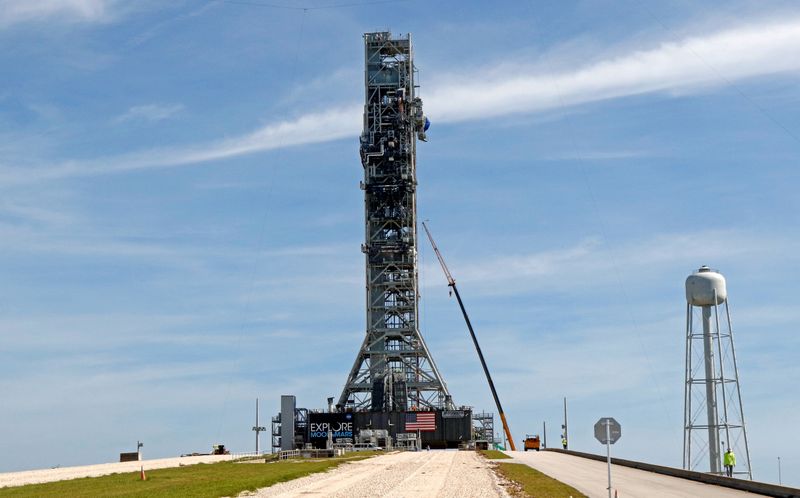By Joey Roulette
WASHINGTON (Reuters) - NASA's Boeing-built deep space exploration rocket, Space Launch System (SLS), is set to fire its behemoth core stage for the first time on Saturday, a crucial test for a years-delayed U.S. government project facing mounting pressure from emerging private sector technology.
Space Launch System's hot fire test, expected to begin at 5 p.m. EST (2200 GMT) Saturday at NASA's Stennis Space Center in Mississippi, caps a nearly year-long 'Green Run' test campaign to validate the rocket's design.
It is seen as a vital step before a debut unmanned launch later this year under NASA's Artemis program, the Trump administration's push to land humans on the moon again by 2024.
NASA moved the hot fire time up an hour to 4 p.m., but control room engineers by that time had indicated some last-minute issues that caused an hour-long hold on the clock, setting the time back to 5 p.m. as originally planned.
"Obviously some of our engineers in the test control center have seen some data that they don't like or might be not exactly normal for what they usually see," NASA propulsion engineer Alex Cagnola said on a live video feed.
Saturday's test will see the rocket's four Aerojet Rocketdyne RS-25 engines ignite for roughly eight minutes, generating 1.6 million pounds of thrust and consuming 700,000 gallons of propellants on a test stand to simulate internal conditions of liftoff.
"This is a once-in-a-generation kind of test," Jim Maser, Aerojet Rocketdyne's Senior Vice President of Space, told Reuters. "This will be the first time four RS-25s fire together at the same time."
The expendable super heavy-lift SLS is three years behind schedule and nearly $3 billion over budget. Critics have long argued for NASA to transition from the rocket's shuttle-era core technologies, which have launch costs of $1 billion or more per mission, to newer commercial alternatives promising lower costs.
By comparison, it costs as little as $90 million to fly the massive but less powerful Falcon Heavy from Elon Musk's SpaceX, and some $350 million per launch for United Launch Alliance's legacy Delta IV Heavy.
While newer, more reusable rockets from both companies - SpaceX's Starship and United Launch Alliance's Vulcan - promise heavier lift than Falcon Heavy or Delta IV Heavy potentially at lower cost, SLS backers argue it would take two or more launches on those rockets to launch what SLS could carry in a single mission.
Reuters reported in October that President-elect Joe Biden's space advisers aim to delay Trump's 2024 goal, casting fresh doubts on the long-term fate of SLS just as SpaceX and Jeff Bezos' Blue Origin scramble to bring rival new heavy-lift capacity to market.
NASA and Boeing (NYSE:BA) engineers have stayed on a ten-month schedule for the Green Run "despite having significant adversity this year," Boeing's Space Launch System manager John Shannon told reporters this week.

Shannon cited timeline hiccups that included five tropical storms and a hurricane that swept over Stennis, as well as a three-month closure after some engineers tested positive for the coronavirus in March.